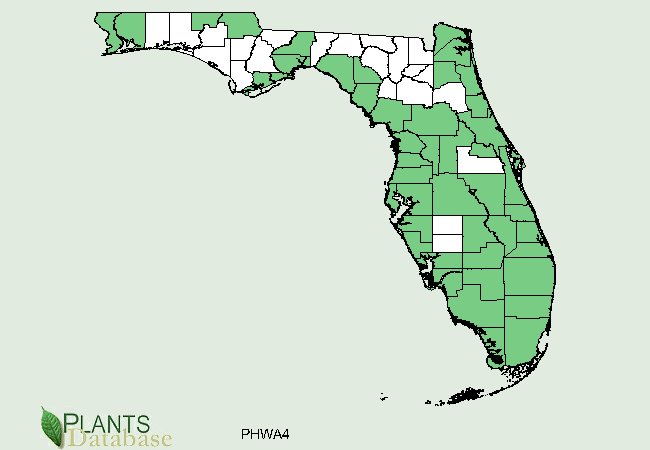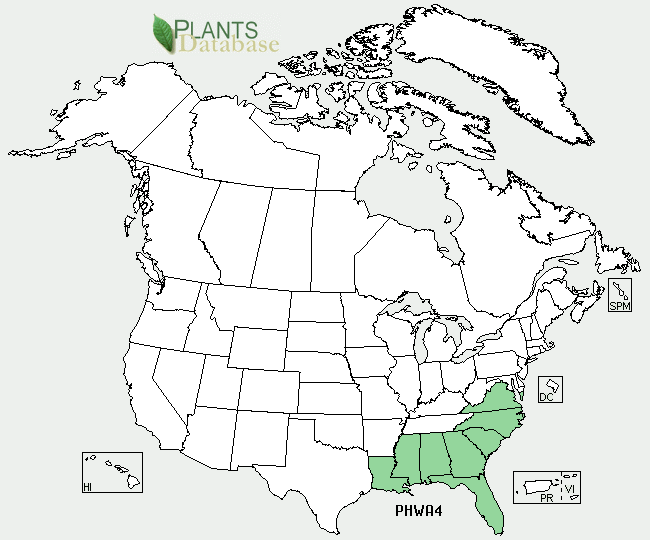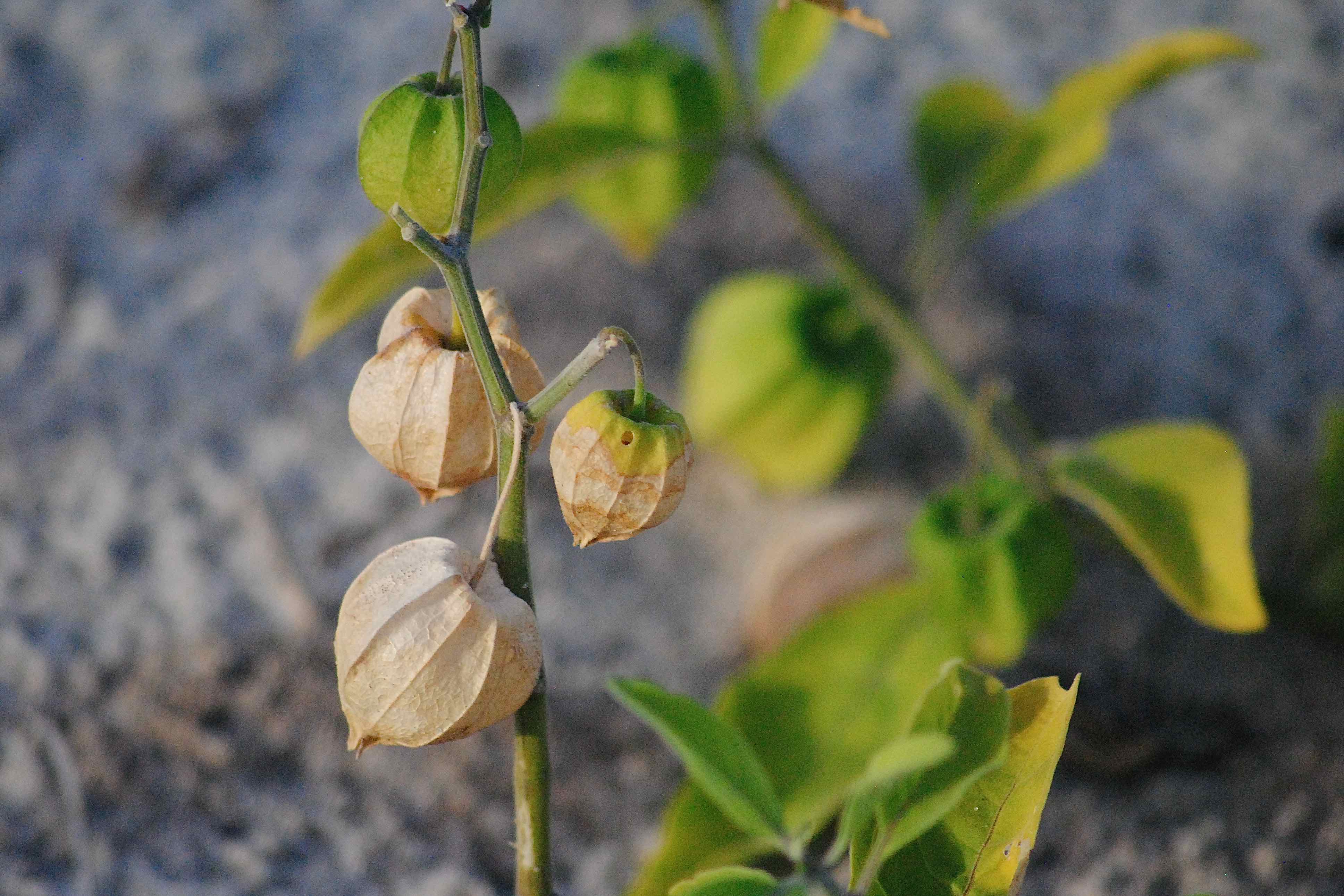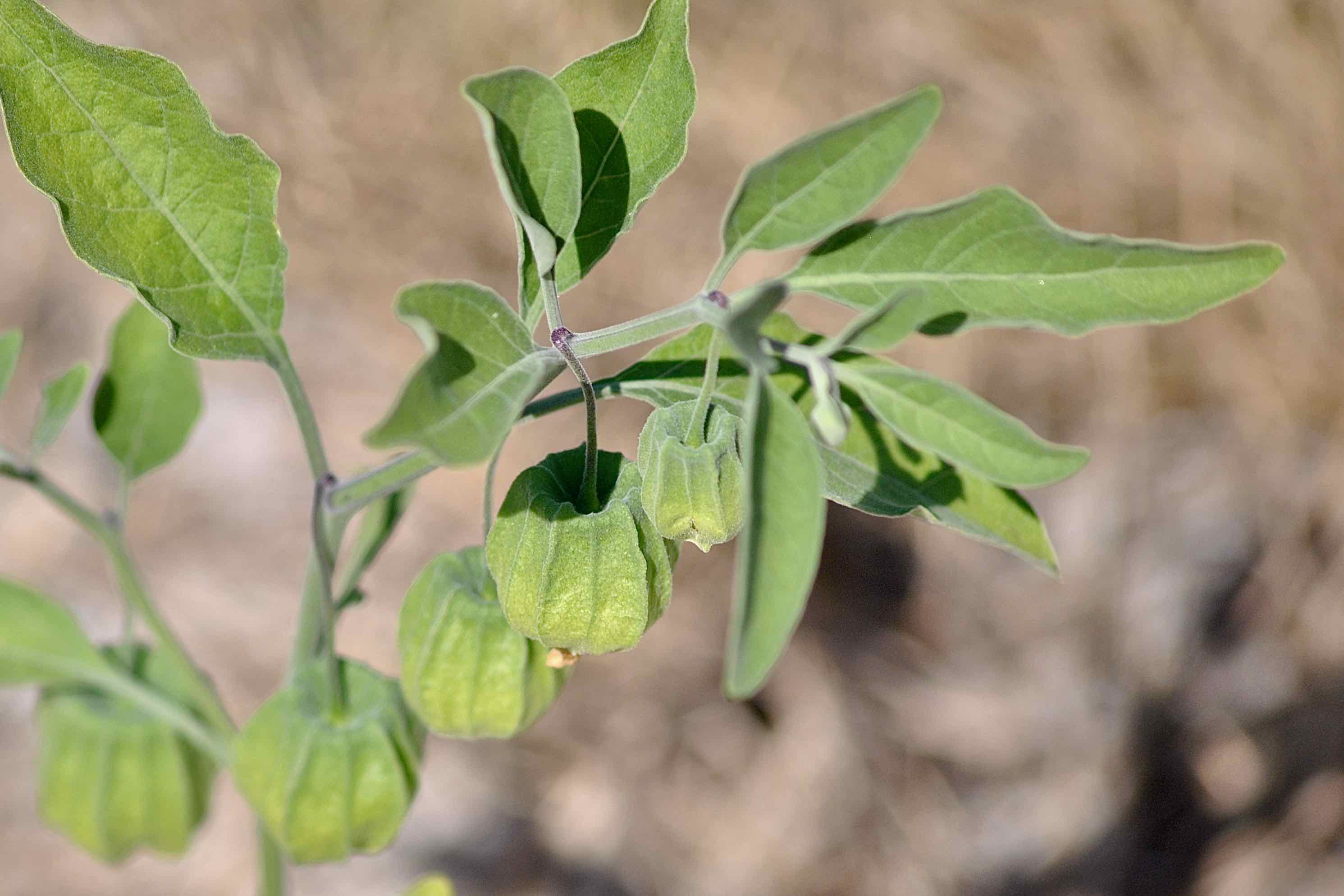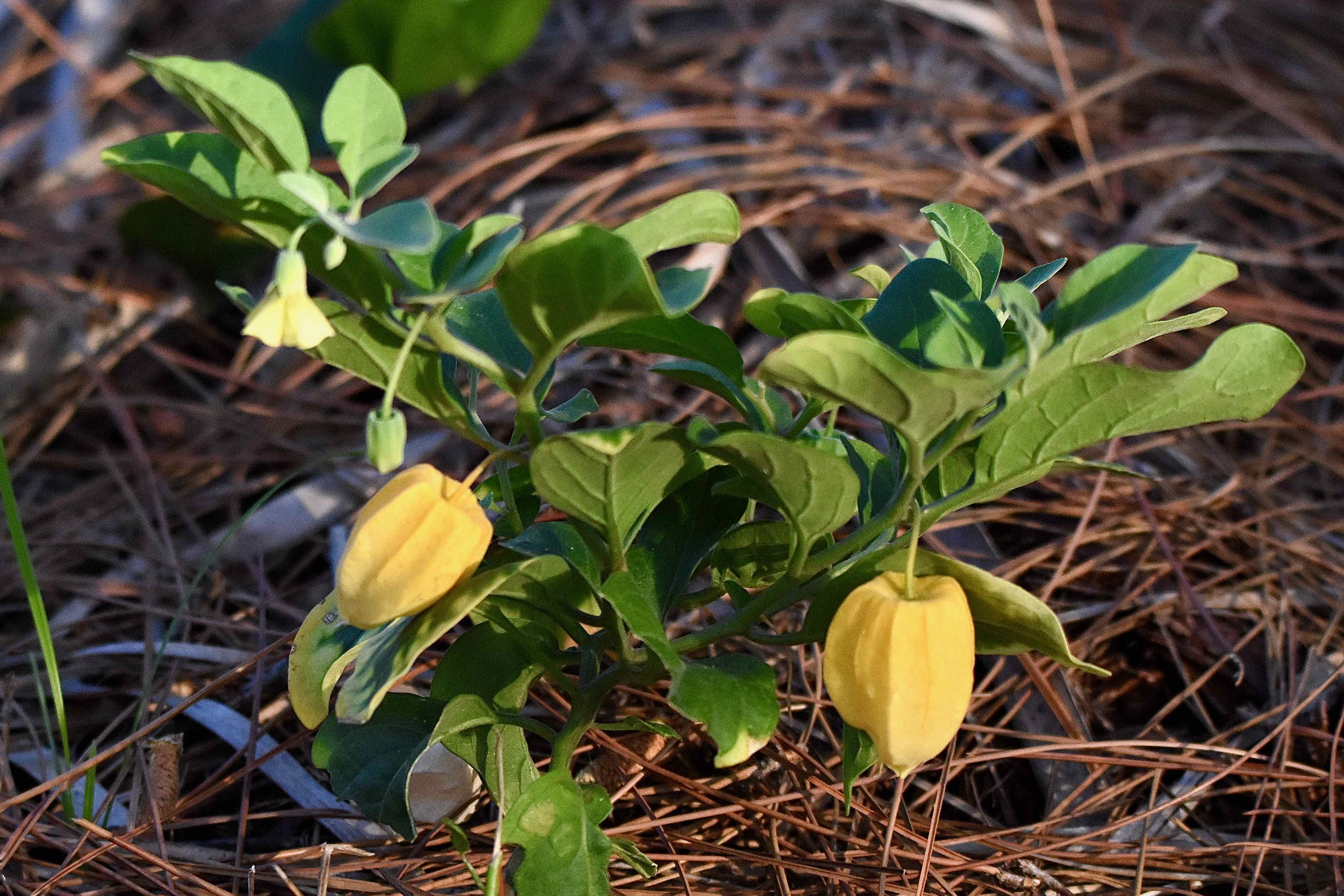
Walter's groundcherry, photographed at Seacrest Scrub Natural Area, Boynton Beach, Palm Beach County, in February 2017.
Walter's groundcherry, Physalis walteri, is South Florida's answer to Mexico's tomatillo. We say that for two reasons: the tomatillo is in fact a groundcherry and member of the Physalis genus. Secondly, while there are other groundcherry species growing in South Florida, Walter's is probably the most abundant and widespread.
It is a Florida native, found in most of the Peninsula and parts of the Panhandle. It's also native to the Atlantic and Gulf coastal states from Virginia to Louisiana.
The first thing to know about groundcherries is that they are members of Solanaceae, the nightshade family, which includes tomatoes, potatoes and peppers. The second thing to know is that they all are members of the Physalis genera, which means bladder in Greek, and refers to papery sack that encases the fruit.
With Walter's groundcherry, the fruit is similar to a cherry tomato, and turns from green to deep orange when ripe. The husk, or sack, turns from green to a papery brown. The green fruit is toxic but quite edible raw or cooked when ripe. More on that in a bit, but for now a little more on the species as a whole.
There are 9 varieties of groundcherry found in Florida, six of them in South Florida, according to the Institute for Regional Conservation. They all produce a small, dangling, trumpet-shaped yellow flower that produces a fruit wrapped up in a papery sack. They do vary from each other in ways subtle or distinct. Walter's is on the dimunitive side, reaching six inches to a foot off the ground. It is covered in fine hairs that give the plant a grayish tone. The leaves are elliptical in shape, wavy, have smooth edges and are about an inch to four inches long.
The flowers hang upside down, and have a purplish throat that can vary in shade from light to dark. In South Florida, the plant blooms year-round; in colder climates, blooming season is the summer months. Note: we turned the flower shown below for illustration purposes.
Habitats include coastal dunes, scrubs and pine flatwoods. It is drought tolerant, takes full sun or light shade and will grow in a variety of well-drained soils. It is offered for sale by a few growers for restorations, natural landscapes and in wildflower gardens. Walter's groundcherry is a perennial, though a short-lived one.
As we noted above, Walter's groundcherry is edible when fully ripe. We've read that it tastes like a strawberry or pineapple. It can be eaten raw, in a salad or cooked. The fruit also can be used in preserves and pies. Like all groundcherries, it is rich in cryptoxanthin, a chemical that the body converts into vitamin A. Two cautionary notes: the husk isn't edible, and is in fact toxic; do not eat the fruit if it has a sour taste. Oh, and our standard warning: don't eat anything unless you're absolutely, positively certain about what you're putting in your mouth.
When researching Walter's, you'll come across the scientific name Physalis vicosa. It's a synonym — a scientific name that botanists no longer use — but it's still Walter's groundcherry. One more note: the tomatillo is Physalis philadelphica.
Other common names include Walter's husk-tomato, starhair groundcherry, grape groundcherry, sticky groundcherry, yellow ground cherry and dune groundcherry. Also, ground-cherry.
So who is the Walter of Walter's groundcherry? Thomas Walter, an 18th century Englishman who moved to South Carolina and became fascinated with botany. His book, Flora Caroliniana, described more than 1,000 plant species, and was the first book published in America (1788) that used Linnaeus' binomial naming system that scientists still use today.
Seacrest Scrub Natural Area
It is a Florida native, found in most of the Peninsula and parts of the Panhandle. It's also native to the Atlantic and Gulf coastal states from Virginia to Louisiana.
The first thing to know about groundcherries is that they are members of Solanaceae, the nightshade family, which includes tomatoes, potatoes and peppers. The second thing to know is that they all are members of the Physalis genera, which means bladder in Greek, and refers to papery sack that encases the fruit.
With Walter's groundcherry, the fruit is similar to a cherry tomato, and turns from green to deep orange when ripe. The husk, or sack, turns from green to a papery brown. The green fruit is toxic but quite edible raw or cooked when ripe. More on that in a bit, but for now a little more on the species as a whole.
There are 9 varieties of groundcherry found in Florida, six of them in South Florida, according to the Institute for Regional Conservation. They all produce a small, dangling, trumpet-shaped yellow flower that produces a fruit wrapped up in a papery sack. They do vary from each other in ways subtle or distinct. Walter's is on the dimunitive side, reaching six inches to a foot off the ground. It is covered in fine hairs that give the plant a grayish tone. The leaves are elliptical in shape, wavy, have smooth edges and are about an inch to four inches long.
The flowers hang upside down, and have a purplish throat that can vary in shade from light to dark. In South Florida, the plant blooms year-round; in colder climates, blooming season is the summer months. Note: we turned the flower shown below for illustration purposes.
Habitats include coastal dunes, scrubs and pine flatwoods. It is drought tolerant, takes full sun or light shade and will grow in a variety of well-drained soils. It is offered for sale by a few growers for restorations, natural landscapes and in wildflower gardens. Walter's groundcherry is a perennial, though a short-lived one.
As we noted above, Walter's groundcherry is edible when fully ripe. We've read that it tastes like a strawberry or pineapple. It can be eaten raw, in a salad or cooked. The fruit also can be used in preserves and pies. Like all groundcherries, it is rich in cryptoxanthin, a chemical that the body converts into vitamin A. Two cautionary notes: the husk isn't edible, and is in fact toxic; do not eat the fruit if it has a sour taste. Oh, and our standard warning: don't eat anything unless you're absolutely, positively certain about what you're putting in your mouth.
When researching Walter's, you'll come across the scientific name Physalis vicosa. It's a synonym — a scientific name that botanists no longer use — but it's still Walter's groundcherry. One more note: the tomatillo is Physalis philadelphica.
Other common names include Walter's husk-tomato, starhair groundcherry, grape groundcherry, sticky groundcherry, yellow ground cherry and dune groundcherry. Also, ground-cherry.
So who is the Walter of Walter's groundcherry? Thomas Walter, an 18th century Englishman who moved to South Carolina and became fascinated with botany. His book, Flora Caroliniana, described more than 1,000 plant species, and was the first book published in America (1788) that used Linnaeus' binomial naming system that scientists still use today.
Seacrest Scrub Natural Area
Click on photo for larger image
U.S. Department of Agriculture Distribution Maps
